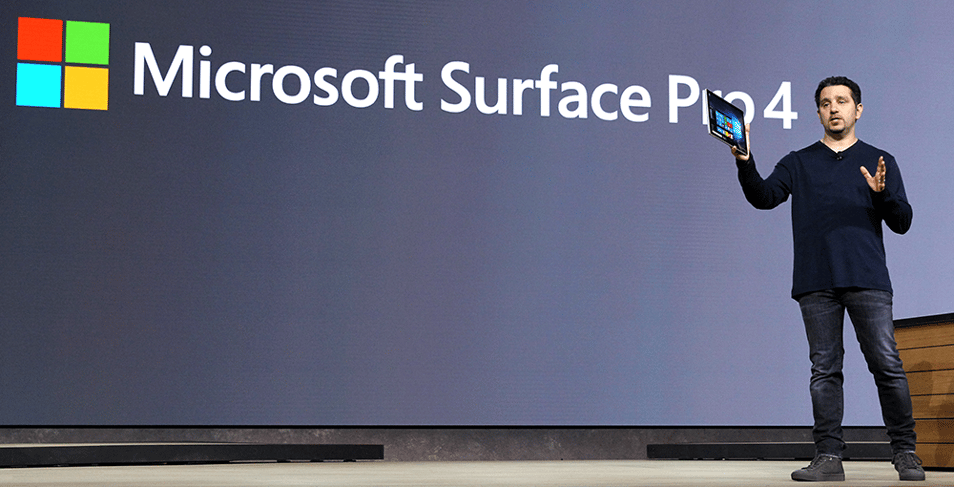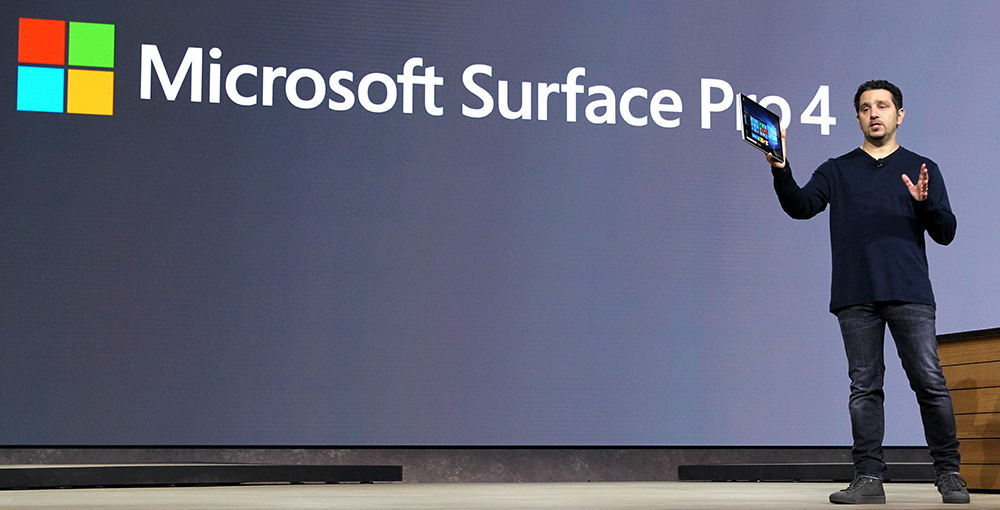
The 8 main news items to remember from the Microsoft 10 Devices event
After the very successful launch of Windows 10 Desktop and pending the commissioning of Windows 10 Mobile at the end of the year… This last October 6, Microsoft did an impressive overview of its latest hardware!
Some of the things discussed included the new Lumia and Surface Pro models, an announcement on Facebook and the universal apps, the presentation of Microsoft Band 2, an impressive demo of HoloLens and a big surprise; the announcement of the Surface Book release, the new Microsoft half-tablet and half-PC device.
Here is a summary of the 8 most important news items of the event.
1. Lumia 950 and 950XL, the highlight Microsoft models
These two mobiles are characterized by their respective screen sizes 5.2 and 5.7 inches and are what we call phablets i.e. halfway between a smartphone and a tablet.
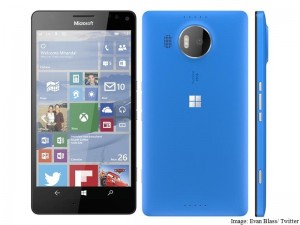
They take on the hardware able to highlight the technological advances of Windows 10 Mobile and in particular of Windows Hello, able to unlock your mobile through facial recognition (Windows’ response to iPhone and Nexus’ fingerprint recognition).
2. Lumia 550, the model for a small budget
Microsoft doesn’t forget the small budgets including the Lumia 550 in its latest range: a Windows 10 mobile with a 5 inch screen at a competitive price.
3. Continuum mode and the dock display
One of the most impressive Windows 10 Mobile novelties; Continuum can take full advantage of universal apps adapting the display of Windows 10 on the screen for which it is intended.
On paper, this means that you can virtually transform your smartphone into a PC, by simply plugging your phone into a screen, a keyboard and a mouse via the Dock Display.
In theory, it’s a step towards the convergence of screens.
In practice, we remain skeptical for the moment: what situation would we find ourselves in possession of a screen, keyboard and a mouse without a tower or laptop close by?
4. The improvements of the Surface Pro
The gap between Surface Pro 3 and 4 is clearly less important than between the 2nd and 3rd generation, but the refreshing new look is a real improvement.
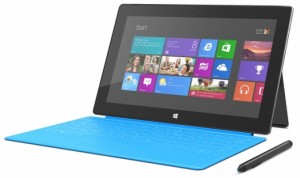
Microsoft brings notable improvements to its range:
- The screen from 12 to 12.3 inches without changing an inch of the device’s size
- Over 64 GB the disk capacity now extends from 128 GB to 1TB
- The Surface Pro 4 is thinner and lighter than its big sister
- According to Microsoft, it is 30% more powerful than the Surface 3 and 50% more powerful than a MacBook Air.
On the accessories side, it’s the Type Cover that stands out! Enhanced typing comfort, bigger touchpad, … the keyboard continues to impress.
5. The SURFACE BOOK- the big surprise
Nothing had leaked on the Surface Book ahead of the event. And Panos Panay unveiled the new device at the very end of the conference. Consequently, the surprise was complete!
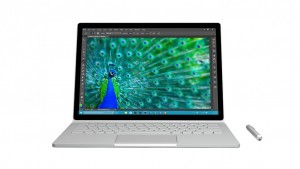
The Surface Book is a hybrid tablet/laptop: it can make up for some of the shortcomings of the Surface Pro 4 that could restrain purchasing for certain consumers.
> The tablet is directly inserted into a keyboard dock. Once the tablet is inserted in the keyboard dock, the whole set behaves like a laptop and its center of gravity allows it to be used on the knees in a traditional manner.
> On the hardware side, the dock brings significant extra power to the tablet with a dedicated GPU and a battery life of 12h.
> With a screen of 13.5 inches, it becomes difficult to blame the Surface range for not offering screen sizes adapted to the professional world.
> Inspired by Lenovo, Microsoft has rendered the Surface Book 100% flexible, with a screen that can be turned around completely behind the keyboard, like a spiralled book.
6. Universal applications
The novelty of the event, it’s the announcement of the construction of universal applications by Facebook (for Facebook, Facebook Messenger and Instagram), which should be released, in the coming months.
When Windows Mobile 10 is released in December, we can start to have a real opinion on the workings of the universal apps.
>> Microsoft wants to break the vicious cycle of « if the ecosystem doesn’t have significant market share, the developers will not develop application, if there aren’t applications in the store, users will not buy Windows mobiles. »
>> The actual effort that developers will have to provide to adapt their applications for these many screens remains to be measured. Microsoft promises that porting an application from one platform to another is simple, but between the marketing speech and reality, the difference is sometimes large!
>> We must then wait some months to measure an eventual positive impact of universal apps on the Windows ecosystem: in terms of market share and quality.
7. MICROSOFT BAND 2, half smartwatch-half fitness tracker
The Microsoft Band first generation (sort of the Microsoft trial version) has received a warm reception from journalists who had tested it. Microsoft used users’ feedback of the first model and prepared a more mature second generation.
The Microsoft Band 2 has arrived and matches the expectations in every aspect. It is equipped with more sensors (11!) than its predecessor and looks much better! The electronic handcuff look is over, the Band 2 offers a rounded, fluid and much more pleasant design.
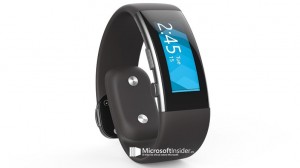
On the usage side, the Band 2 is situated halfway between smartwatch and fitness tracker. It attempts to reproduce the best of two worlds: SMS notifications, notifications of calls, emails, applications like Facebook or Twitter, but also pedometer, GPS, sleep analysis and sports performance analysis.
This Band 2 has it all… provided it arrives in our region! No release date on the old continent has been announced, even if we feel strongly about the Europe release.
8. Hololens, a Developer Kit for the beginning of 2016
The Hololens demonstration during the conference was astounding and showed how much the device can change everything in the future. Here where everyone swears by virtual reality, Microsoft responds with augmented reality. The goal is not to immerse the user in a virtual world, but to immerse the virtual in the user’s world and allow them to interact with it.
Future commercial success or a fate similar to Google Glasses (Google stopped production in January 2015)? It is still too early to say. But the applications, especially in the field of video games, seem endless!
We will know more very soon: a Developer Kit will be available for all developers wishing to butter up the beast during the first quarter of 2016, on the sole condition to fulfil the $3,000 required for the purchase of a Hololens copy.
So it’s safe to bet that we will hear about Hololens in 2016 for sure and that a commercial release is planned for 2017.
For those who wish to get a proper idea, you can check the video presentation here
And you, what did you learn from the event?
